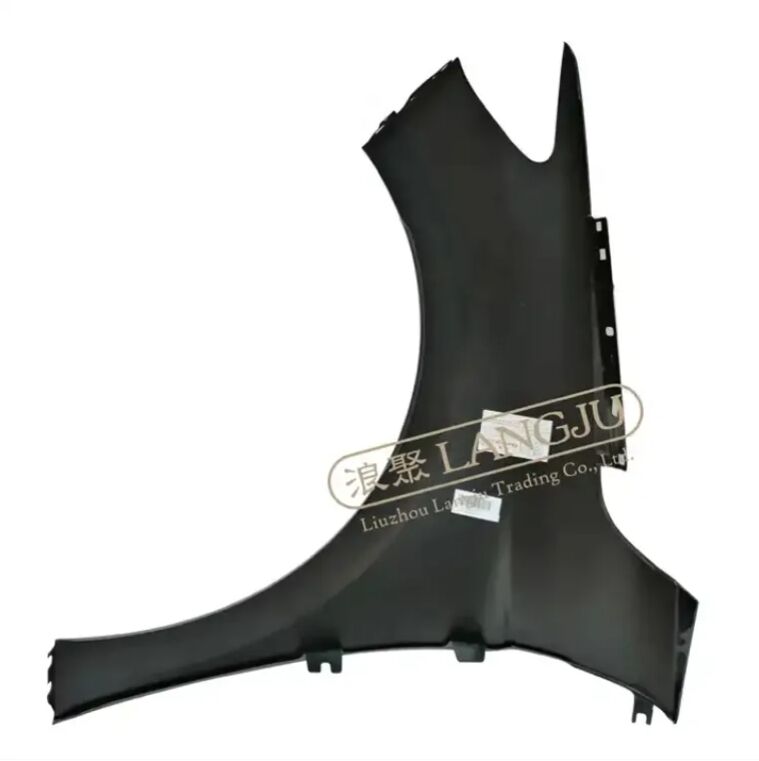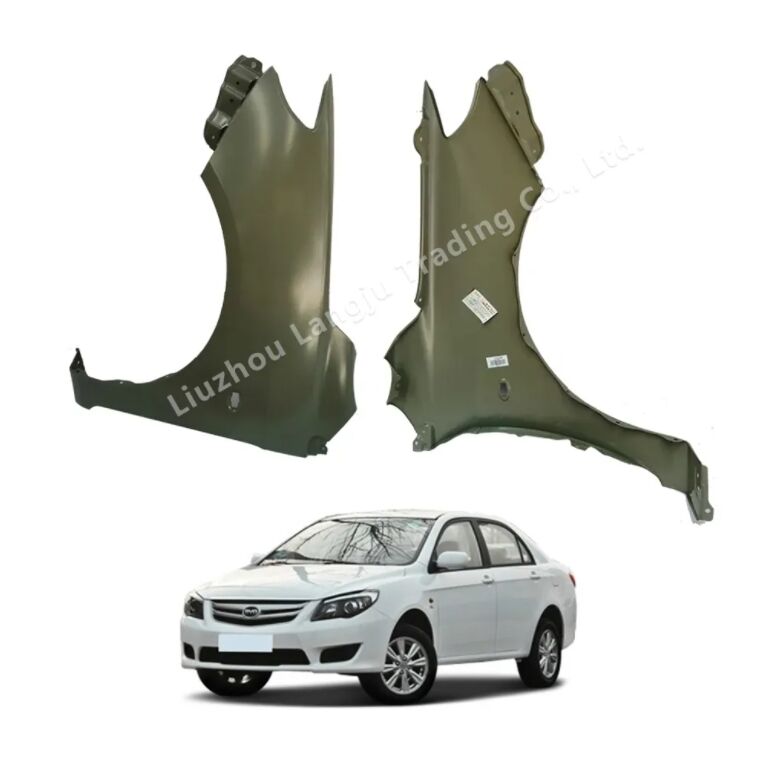Understanding the Impact of Rear Fender Design on Electric Vehicle Performance
The automotive industry's shift toward electric vehicles has brought unprecedented attention to aerodynamic efficiency. Among the various design elements that influence a vehicle's aerodynamic performance, rear fender design plays a crucial role in determining how air flows around the vehicle. Modern electric sedans are particularly sensitive to aerodynamic optimization, as their range and efficiency directly depend on minimizing air resistance.
When examining rear fender aerodynamics, engineers focus on how the shape and width affect the vehicle's drag coefficient. A well-designed rear fender system can significantly reduce turbulence and improve overall vehicle stability at higher speeds. This relationship between form and function has led to extensive research and development in rear fender design across the electric vehicle industry.
The Science Behind Rear Fender Aerodynamics
Air Flow Patterns and Turbulence Management
The way air moves around a vehicle's rear fender has profound implications for its aerodynamic efficiency. When air reaches the rear section of an electric sedan, it must navigate around the fender structure while maintaining smooth flow characteristics. Wider rear fenders can help manage this airflow by providing a more gradual transition surface, reducing the likelihood of turbulent wake formation behind the vehicle.
Advanced computational fluid dynamics (CFD) simulations have revealed that the width and curvature of rear fenders significantly influence the pressure distribution around the vehicle's rear quarter. By optimizing these parameters, manufacturers can achieve better aerodynamic performance without compromising the vehicle's aesthetic appeal or functionality.
Temperature Management and Cooling Benefits
Beyond pure aerodynamics, rear fender design also affects the vehicle's thermal management system. Wider rear fenders can create additional space for cooling channels and help dissipate heat more effectively from the battery and drivetrain components. This dual-purpose approach to rear fender design demonstrates the complexity of modern electric vehicle engineering.
Design Considerations for Electric Sedan Rear Fenders
Material Selection and Weight Distribution
The choice of materials for rear fender construction directly impacts both aerodynamic performance and overall vehicle efficiency. Advanced composites and lightweight alloys allow designers to create wider fenders without adding significant mass to the vehicle. This careful balance between width and weight is crucial for maintaining optimal performance characteristics.
Engineers must also consider how the rear fender design affects weight distribution and vehicle handling. A wider rear fender configuration can influence the center of gravity and impact dynamic stability, requiring careful integration with the vehicle's suspension and chassis systems.
Manufacturing and Cost Implications
While wider rear fenders may offer aerodynamic advantages, their production presents unique challenges. Complex tooling requirements and increased material costs must be weighed against the potential performance benefits. Manufacturers must optimize their production processes to ensure cost-effective manufacturing while maintaining the precise geometries needed for optimal rear fender aerodynamics.

Performance Benefits and Real-World Applications
Range Enhancement Through Aerodynamic Optimization
Studies have shown that optimized rear fender aerodynamics can contribute to meaningful improvements in electric vehicle range. By reducing drag and managing airflow more effectively, wider rear fenders help vehicles maintain efficiency at highway speeds. This translates to fewer charging stops and enhanced real-world usability for electric sedan owners.
Testing has demonstrated that properly designed wide rear fenders can contribute to a reduction in energy consumption by several percentage points, particularly during high-speed highway driving where aerodynamic forces become more significant.
Stability and Handling Characteristics
The influence of rear fender aerodynamics extends beyond pure efficiency gains. Wider fenders can enhance vehicle stability by managing cross-wind sensitivity and reducing lift at high speeds. This improved aerodynamic balance contributes to a more confident and secure driving experience, particularly important for high-performance electric sedans.
Future Trends in Rear Fender Design
Integration with Active Aerodynamic Systems
The next generation of electric sedans is likely to feature increasingly sophisticated active aerodynamic systems integrated with rear fender design. These systems may include adaptive elements that modify the effective width and shape of the fender based on driving conditions and speed, maximizing efficiency across different operating scenarios.
Research is ongoing into smart materials and morphing surfaces that could revolutionize how rear fenders interact with airflow, potentially leading to even greater improvements in vehicle efficiency and performance.
Sustainability and Environmental Considerations
As the automotive industry continues its focus on sustainability, rear fender design must evolve to incorporate eco-friendly materials and manufacturing processes. Future developments may include biodegradable composites and recycled materials that maintain optimal aerodynamic properties while reducing environmental impact.
Frequently Asked Questions
How much can wider rear fenders improve an electric sedan's range?
Optimized rear fender aerodynamics can improve an electric vehicle's range by 2-5% under ideal conditions, with the most significant benefits observed during highway driving at speeds above 60 mph.
Do wider rear fenders affect the vehicle's charging efficiency?
While rear fender design primarily impacts driving efficiency, it has no direct effect on charging efficiency. However, the reduced energy consumption during driving means less frequent charging may be required.
Can existing electric sedans be modified with wider rear fenders?
While aftermarket modifications are possible, achieving optimal aerodynamic benefits requires careful integration with the vehicle's overall design. Factory-designed solutions typically offer the best performance and reliability.

